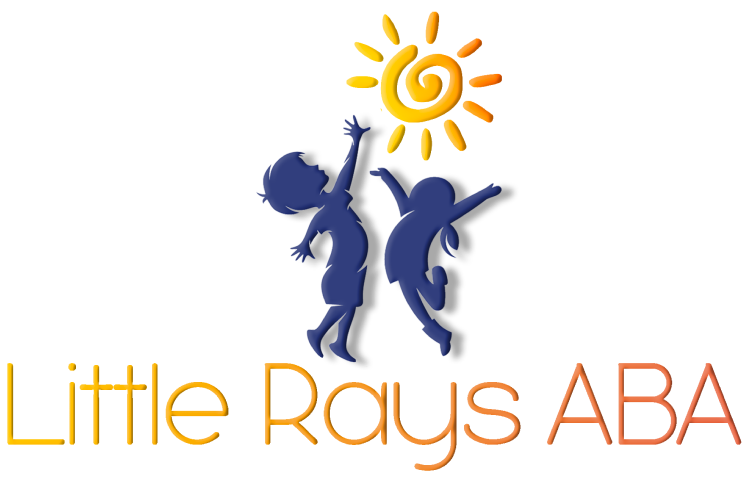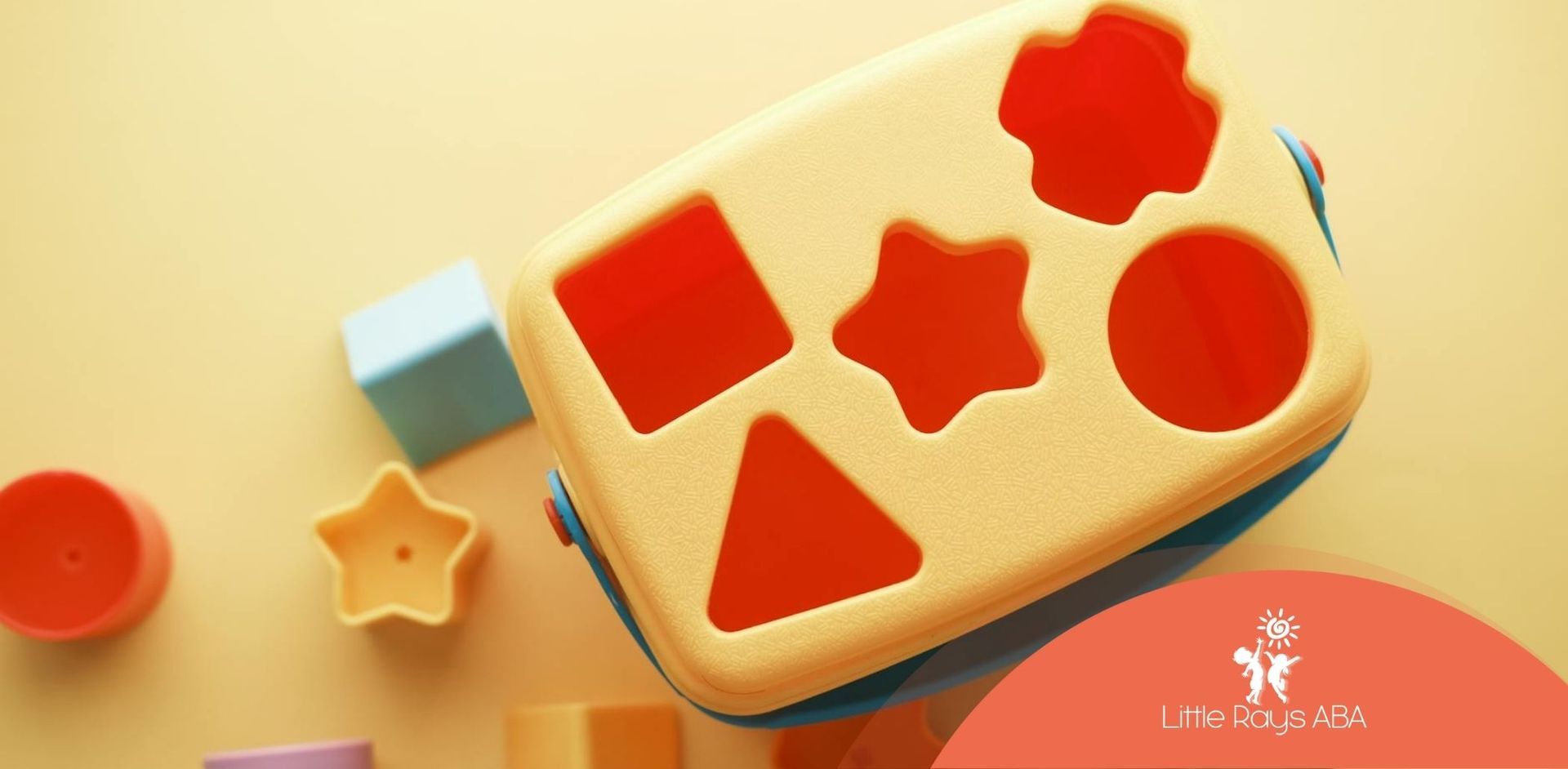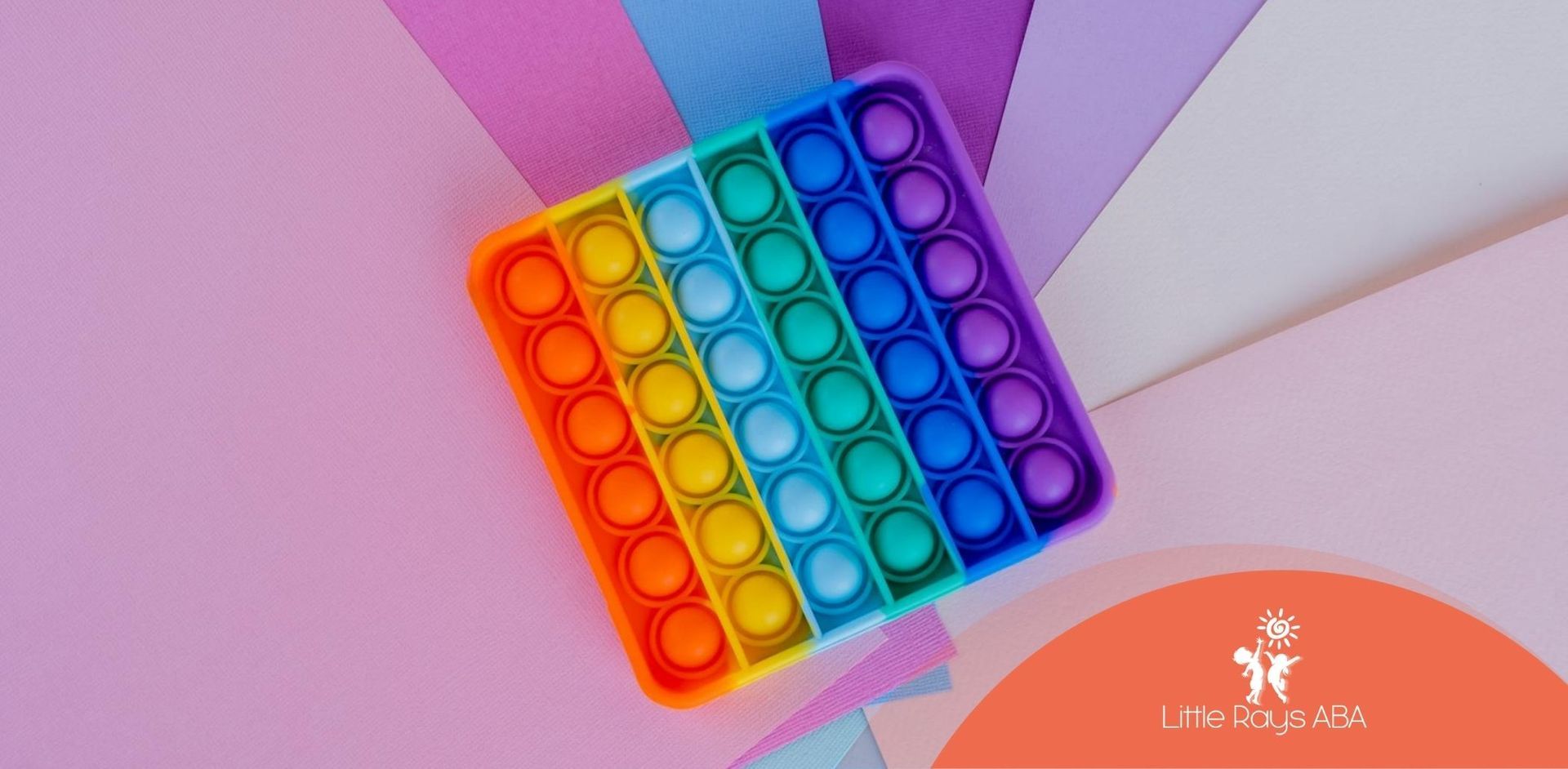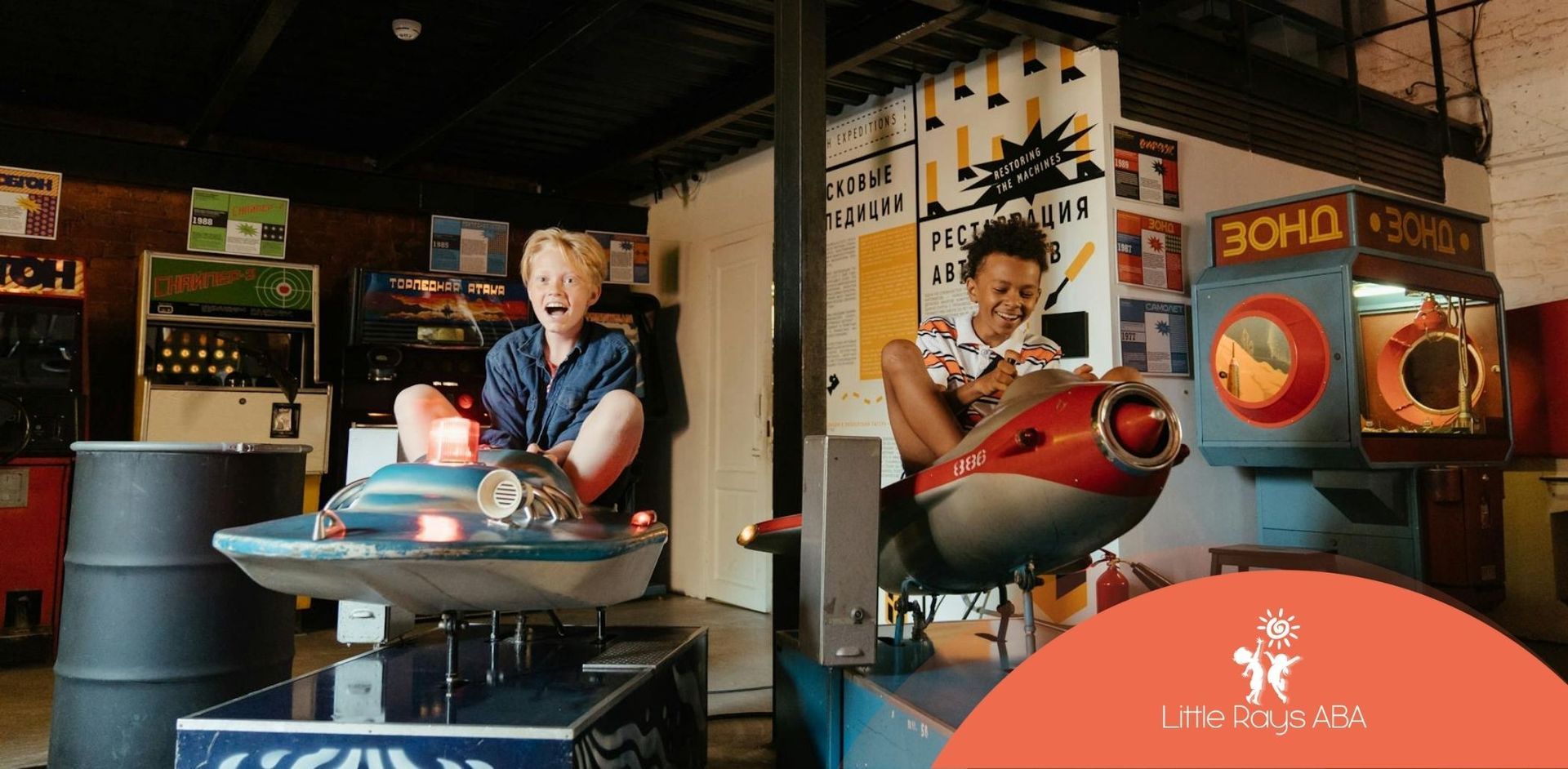Understanding Sensory Challenges
Sensory Processing Disorder in Autism
Sensory Processing Disorder (SPD) often tags along with Autism Spectrum Disorder (ASD). Kids with SPD struggle to make sense of the sensory world around them. We're talking about touch, sound, sight, taste, and smell. Research shows that SPD is pretty common in kids with ASD, with numbers ranging from 42% to 88%.
These kiddos might dodge certain textures like they're the plague, jump at loud noises, or crave intense sensory experiences. These sensory quirks can throw a wrench in their daily gears, making socializing, schoolwork, and everyday stuff a bit of a challenge.
Sensory Integration Interventions
Sensory Integration (SI) interventions are like a superhero cape for kids with ASD and SPD, helping them get a grip on sensory info. SI therapy zeroes in on how the brain handles sensory input, aiming to boost sensory modulation, behavior, focus, social skills, school smarts, and independence through adaptive responses.
Research backs up SI interventions, showing they can spark positive changes in kids with ASD. For instance, kids who got SI therapy showed big improvements in Goal Attainment Scaling scores and a drop in autistic mannerisms. Plus, SI therapy has been known to cut down on self-stimulating behaviors and ramp up functional behaviors like socializing and play.
Ayres Sensory Integration (ASI) therapy is a crowd favorite among SI interventions. It involves specific techniques and processes that need a pro therapist. A systematic review of studies on ASI therapy for kids with autism shows it's considered an evidence-based practice by the Council for Exceptional Children.
For parents and caregivers wanting to boost their child's sensory skills, therapeutic toys can be a game-changer. These toys are crafted to give sensory stimulation and help kids with ASD and SPD sharpen their sensory processing skills.
By getting a handle on the sensory hurdles faced by kids with autism and checking out effective interventions like SI therapy, parents and caregivers can better support their child's sensory growth and overall happiness. For more tips on picking the right toys for kids with sensory processing disorder, swing by our guide on toys for sensory processing disorder.
Importance of Therapeutic Toys
Therapeutic toys are like secret weapons for kids with autism, helping them grow and thrive. These toys are crafted to meet sensory needs and boost various skills.
Benefits of Therapeutic Toys
Therapeutic toys are a game-changer for kids with autism. They can help with sensory processing, motor skills, and social interaction. Here's the scoop:
- Sensory Regulation: These toys help kids with autism handle sensory overload, keeping them chill and relaxed.
- Motor Skills Development: Toys like building blocks or puzzles can sharpen those fine and gross motor skills.
- Social Interaction: Playing with these toys can spark social interaction and communication, helping kids learn to connect with others.
- Cognitive Development: These toys can fire up the brain, encouraging problem-solving and critical thinking.
Role of Toys in Sensory Development
Toys are a big deal in helping kids with autism make sense of the world around them. They offer the sensory input needed for kids to process and react to their surroundings. Here's how therapeutic toys help with sensory development:
- Tactile Stimulation: Toys with different textures can make kids more comfortable with various sensations.
- Visual Stimulation: Bright toys or ones with lights can boost visual skills, helping kids focus and track objects.
- Auditory Stimulation: Sound-making toys can improve listening skills and help kids get used to different noises.
- Proprioceptive Input: Toys that involve pushing, pulling, or lifting can help kids understand their body movements and positions.
| Type of Stimulation | Example Toys |
|---|---|
| Tactile | Textured balls, sensory bins |
| Visual | Light-up toys, colorful puzzles |
| Auditory | Musical instruments, sound-making toys |
| Proprioceptive | Weighted blankets, resistance bands |
Therapeutic toys are must-haves for supporting the sensory and developmental needs of kids with autism. By picking the right toys, parents and caregivers can create a nurturing environment for their children. For more tips on choosing the best toys, check out our articles on best toys for autistic toddlers and toys for autistic teenagers.
Types of Therapeutic Toys
Therapeutic toys are like little superheroes for kids with Autism Spectrum Disorder (ASD), helping them make sense of the world around them. These toys are crafted to meet sensory needs and can really boost a child's ability to handle sensory info. Let's check out two main types: toys for touchy-feely fun and toys that dazzle the eyes.
Sensory Toys for Tactile Stimulation
Touch is a big deal for kids with autism. It helps them get comfy with different textures and feelings. Toys that focus on touch can do wonders, like making those tiny hand muscles stronger, easing anxiety, and helping kids get better at processing sensory stuff.
Here are some tactile toys that kids love:
- Fidget Spinners and Cubes: These little gadgets spin and twirl, helping kids chill out and concentrate.
- Therapy Putty: This squishy stuff is perfect for squeezing and stretching, building up hand strength and nimbleness.
- Textured Balls: With all sorts of textures and sizes, these balls offer new touch experiences, helping kids get used to different sensations.
Visual Stimulation Toys
Visual toys are all about catching the eye and are super helpful for kids with autism who have visual sensory needs. These toys can boost visual tracking, focus, and attention, and even help kids relax.
Here are some visual toys that work wonders:
- Light-Up Toys: Flashy toys with colors and patterns grab a kid's attention and give their eyes a workout.
- Bubble Tubes: These tubes have bubbles and lights that move around, creating a soothing visual show.
- Projectors: Projectors that cast moving images or patterns on walls and ceilings can create a chill vibe and help with visual tracking.
For more tips on toys that cater to visual needs, peek at our article on autism-friendly toys.
By adding these therapeutic toys to playtime, parents and caregivers can really help kids with autism grow their sensory skills. Picking toys that match a child's sensory needs and likes is key.
Choosing the Right Toys
Picking the right toys for kids with autism is super important for their sensory growth and overall happiness. This section gives you the lowdown on what to think about when choosing toys and how to keep things safe, so your little one gets the most out of playtime.
Considerations for Toy Selection
When you're on the hunt for toys that help kids with autism, it's all about tuning into their sensory vibes and what they like. Here's what to keep in mind:
- Sensory Preferences: Get a feel for what the child likes. Some kids might love things they can touch, while others might be all about bright colors or cool sounds. Picking toys that match their sensory style can make playtime way more fun.
- Developmental Stage: Choose toys that fit where the child is at developmentally. You don't want toys that are too hard or too easy—just right for learning and growing.
- Therapeutic Goals: Think about what skills you're aiming to boost. If you're working on fine motor skills, toys like puzzles or building blocks that need careful hand movements can be a win.
- Interests and Motivations: Go for toys that match what the child is into. This can make them more excited to play and join in on activities.
- Versatility: Look for toys that can be used in different ways to meet various sensory needs and goals. Toys that offer lots of ways to play can spark creativity and learning.
Safety Guidelines for Therapeutic Toys
Keeping toys safe is a big deal to avoid any mishaps. Here's how to keep things safe:
- Non-Toxic Materials: Go for toys made from safe stuff to dodge any poisoning or allergies. Look for labels that say the toys are free from nasty chemicals.
- Age-Appropriate: Make sure the toys are right for the child's age and don't have small parts that could be a choking hazard. Little ones love putting things in their mouths, so be careful.
- Durability: Pick tough toys that can handle some rough play. Kids with autism might play hard, so sturdy toys are a must for safety and lasting fun.
- Smooth Edges: Check that toys don't have sharp bits that could hurt. This is key for kids who explore toys with their mouths.
- Supervision: Keep an eye on playtime, especially with new toys. This way, you can make sure everything's safe and sound.
- Hygiene: Choose toys that are easy to clean. Regular cleaning keeps things germ-free and healthy.
By sticking to these safety tips, caregivers can create a safe play space for kids with autism.
| Consideration | Description |
|---|---|
| Sensory Preferences | Match toys to the child's sensory likes |
| Developmental Stage | Pick toys that fit the child's age |
| Therapeutic Goals | Choose toys that help with specific skills |
| Interests and Motivations | Go for toys that the child is into |
| Versatility | Find toys that offer lots of play options |
| Safety Guideline | Description |
|---|---|
| Non-Toxic Materials | Make sure toys are safe from harmful stuff |
| Age-Appropriate | Avoid small parts for little kids |
| Durability | Choose tough toys for rough play |
| Smooth Edges | Ensure toys don't have sharp bits |
| Supervision | Watch playtime for safety |
| Hygiene | Pick toys that are easy to clean |
By keeping these tips in mind, caregivers can pick toys that help kids with autism grow and thrive.
Incorporating Play Therapy
Play therapy is like a secret weapon for kids with autism, offering a bunch of perks for their sensory processing and growth. By tossing therapeutic toys into the mix, parents and pros can whip up fun and supportive spaces for these kiddos.
Play Therapy Techniques
Play therapy techniques are all about helping kids with autism pick up crucial skills while having a blast. These methods can be tweaked to fit each child's needs, making play therapy a flexible and effective approach.
- Structured Play: This one's about setting up activities with clear goals and instructions. Structured play helps kids with autism get the hang of expectations and routines. Think puzzles, building blocks, and matching games.
- Sensory Play: Sensory play is all about tickling the senses with different activities. This could be playing with sand or water, jamming with musical instruments, or enjoying colorful lights and patterns. Sensory play helps kids with autism handle sensory info better.
- Role-Playing: Role-playing lets kids act out scenarios and practice social skills. It can boost communication, empathy, and understanding of social cues. Dolls, action figures, or costumes can make role-playing even more fun.
- Animal-Assisted Play: Hanging out with animals, like through equine therapy or having a family pet, can help kids with autism chill, focus, and learn. Taking care of a pet can also build nonverbal communication, compassion, empathy, and trust.
Impact of Play on Sensory Processing
Play has a big impact on how kids with autism process sensory stuff. Playing with therapeutic toys can help them get better at sensory integration and improve their ability to handle sensory info.
- Improved Sensory Integration: Activities with different textures, sounds, and visuals can help kids with autism integrate sensory info better. This can lead to improved coordination, balance, and overall sensory processing.
- Reduced Sensory Overload: By slowly introducing kids to various sensory experiences through play, they can get used to different stimuli. This can help cut down on sensory overload and make it easier for them to handle everyday sensory challenges.
- Enhanced Social Skills: Play therapy can also boost social skills by encouraging kids to interact with others in a structured and supportive setting. Activities that involve taking turns, sharing, and working together can help kids with autism improve their social interactions.
- Increased Emotional Regulation: Play therapy can teach kids with autism to manage their emotions by giving them a safe space to express themselves. Activities like role-playing or interacting with animals can help them develop coping strategies and improve their emotional well-being.
Adding play therapy to the daily routine of kids with autism can have a huge impact on their sensory processing and overall development. By using therapeutic toys and trying out different play techniques, parents and pros can create a supportive environment that encourages growth and success.
Professional Interventions
Occupational Therapy for Sensory Challenges
Occupational therapy (OT) is a big help for kids with autism spectrum disorder (ASD) who deal with sensory hiccups. These therapists are like coaches, teaching kids how to handle everyday stuff like getting dressed, eating, and even making friends (CDC).
They help kids figure out their sensory quirks and come up with ways to handle them. It's all about teaching kids to manage sensory input on their own. Sometimes, this involves using therapeutic toys for autism that offer touch, sight, or sound stimulation to help kids keep their sensory experiences in check.
| Occupational Therapy Goals | Description |
|---|---|
| Sensory Integration | Helping kids understand and manage sensory input. |
| Daily Living Skills | Teaching tasks like dressing, eating, and bathing. |
| Social Interaction | Building skills to connect with others. |
Speech Therapy for Sensory-Related Issues
Speech therapy is another key player for kids with autism facing sensory-related hurdles. Speech therapists tackle issues with speech, swallowing, and mouth muscle movement. They focus on boosting communication skills, which can take a hit due to sensory processing challenges.
These therapists use all sorts of tools, including therapeutic toys, to help kids with their speech and language. Toys that work on oral motor skills, like chewable necklaces or textured toys, can encourage mouth movement and speech growth.
| Speech Therapy Goals | Description |
|---|---|
| Communication Skills | Boosting verbal and non-verbal communication. |
| Oral Motor Skills | Enhancing mouth muscle movement for speech and swallowing. |
| Sensory Regulation | Using toys and techniques to handle sensory input. |
By bringing in professional help like occupational and speech therapy, kids with autism can better handle their sensory world, leading to happier and more successful lives.
SOURCES:
https://pmc.ncbi.nlm.nih.gov/articles/PMC3708964/
https://pmc.ncbi.nlm.nih.gov/articles/PMC6590432/
https://www.nrpa.org/parks-recreation-magazine/2022/november/the-mental-and-therapeutic-benefits-of-nature-for-children-with-autism-spectrum-disorder/
https://www.cdc.gov/autism/treatment/index.html
https://www.autism.org.uk/advice-and-guidance/topics/strategies-and-interventions
Unlock Your Child's Potential with Expert ABA Therapy!
At Little Rays ABA, we provide compassionate, evidence-based ABA therapy to help children with autism thrive. Our personalized approach fosters growth in communication, social skills, and independence.
Get In Touch With Us Today to Get Started With ABA Therapy!
Related Posts
MENU
GET IN TOUCH
7117 San Salvador Dr Boca Raton, FL 33433
3200 Collins Ave Miami Beach, FL 33140



